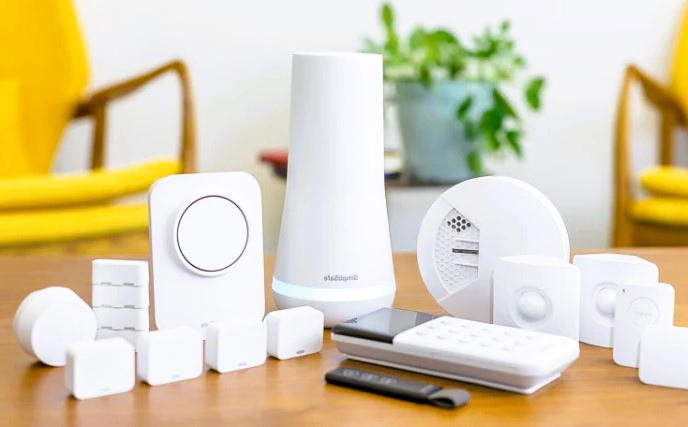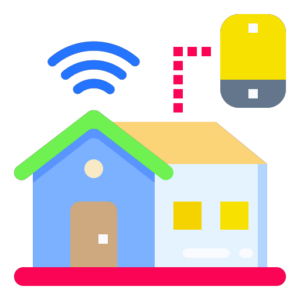In the ever-evolving landscape of modern living, the concept of a “smart home” has emerged as a revolutionary approach to enhancing comfort, convenience, and efficiency. A smart home system integrates various devices and technologies to create an intelligent and interconnected living space. In this exploration, we’ll delve into nine key features that make a smart home system a game-changer for comfort and ease of living.
1. Centralized Control Hub: The Brain of the Smart Home
At the heart of a smart home system lies a centralized control hub, acting as the brain that orchestrates communication between various devices. This hub can take the form of a dedicated device, a smart speaker, or even a smartphone app. The centralization of control enables users to manage and monitor all connected devices from a single interface, streamlining the user experience.
2. Intelligent Lighting: Setting the Mood
Smart lighting is a cornerstone feature of a smart home system. It goes beyond traditional lighting by offering customizable options such as color changes, brightness adjustments, and automated schedules. Users can create lighting scenarios for different occasions, whether it’s a cozy movie night or a vibrant dinner party. Motion sensors and ambient light detectors contribute to energy efficiency by ensuring lights are only active when needed.
3. Climate Control: Personalized Comfort
Smart thermostats and climate control systems provide a personalized approach to comfort. These devices learn user preferences over time, adapting to individual schedules and adjusting temperatures accordingly. Users can control heating, ventilation, and air conditioning (HVAC) systems remotely, ensuring a comfortable environment upon arrival home or optimizing energy usage when away.
4. Home Security Integration: Peace of Mind
A comprehensive smart home system incorporates robust security features. Smart cameras, doorbell cameras, and motion sensors provide real-time monitoring and alert users to potential threats. Integration with smart locks allows for remote locking and unlocking, and users can receive notifications about door/window activity. The ability to check security cameras and lock doors from a smartphone enhances peace of mind, especially when away from home.
5. Automated Window Treatments: Natural Light Management
Smart window treatments, such as motorized blinds or shades, add a layer of sophistication to a smart home system. Users can automate the opening and closing of window coverings based on the time of day or pre-set schedules. Integration with ambient light sensors ensures that natural light is optimized for comfort and energy efficiency.
6. Voice Control and Virtual Assistants: Hands-Free Operation
The integration of virtual assistants like Amazon Alexa, Google Assistant, or Apple Siri allows users to control their smart home system through voice commands. This hands-free approach adds a new dimension to convenience, enabling users to adjust settings, get information, or execute commands without lifting a finger. Voice-controlled devices enhance accessibility and make the smart home experience more inclusive. Do you like the article? Read also about Smart Home: principles of operation and purpose of such equipment.
7. Energy Monitoring and Efficiency: Eco-Friendly Living

Smart home systems often include energy monitoring features, providing insights into energy consumption patterns. Users can identify energy-intensive devices, set usage goals, and receive recommendations for optimizing energy efficiency. Smart plugs and switches enable remote control and monitoring of individual devices, contributing to both cost savings and eco-friendly living.
8. Smart Appliances for a Connected Kitchen
The kitchen becomes smarter with the integration of connected appliances. Smart refrigerators can send notifications about expiring food, and smart ovens can be controlled remotely for preheating or adjusting cooking settings. The ability to create shopping lists directly from the refrigerator or receive recipe suggestions based on available ingredients adds a layer of convenience to the culinary experience.
9. Health and Wellness Monitoring: A Holistic Approach
Some smart home systems extend their capabilities to health and wellness monitoring. Smart devices like fitness trackers, smart scales, and sleep monitors can integrate with the overall system, providing users with insights into their well-being. This holistic approach allows for a more comprehensive understanding of personal health and lifestyle.
International Standards in Smart Home Technology
As the adoption of smart home systems grows globally, the importance of international standards becomes evident. The International Organization for Standardization (ISO) plays a vital role in developing and maintaining standards for smart home technology. These standards cover aspects such as device interoperability, data security, and communication protocols, ensuring a consistent and reliable experience for users worldwide.
For more information on international standards related to smart home technology, you can refer to the ISO website.
Conclusion: Elevating the Living Experience
In conclusion, a smart home system brings together a suite of features that not only enhance comfort but also elevate the overall living experience. From intelligent lighting and climate control to advanced security and health monitoring, the integration of these features creates a home that is responsive, efficient, and tailored to individual preferences. Adhering to international standards ensures that smart home technology remains reliable, secure, and compatible on a global scale. Embrace the future of living with a smart home system that transforms your space into a haven of comfort and convenience.


